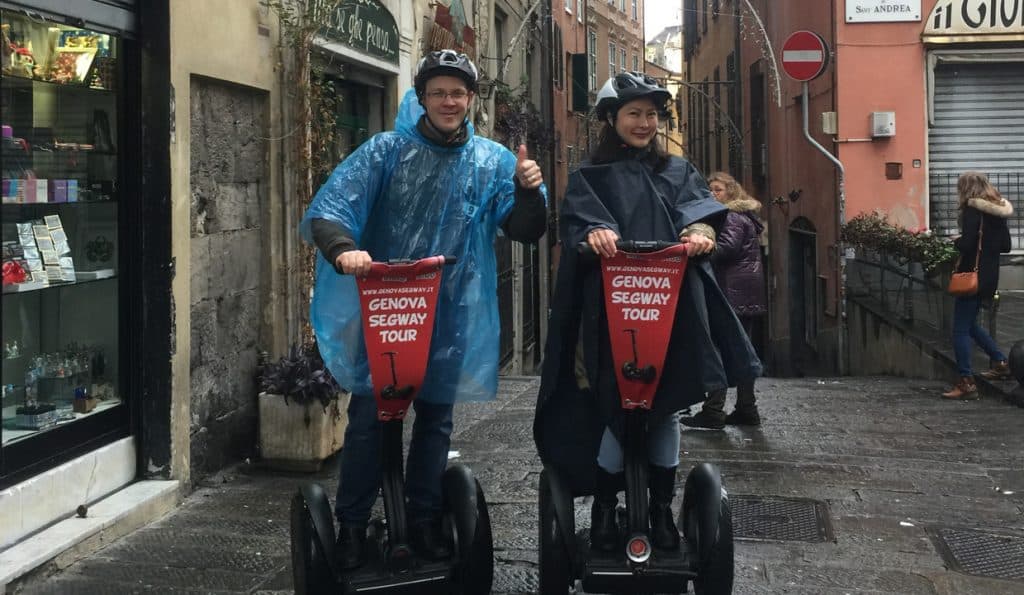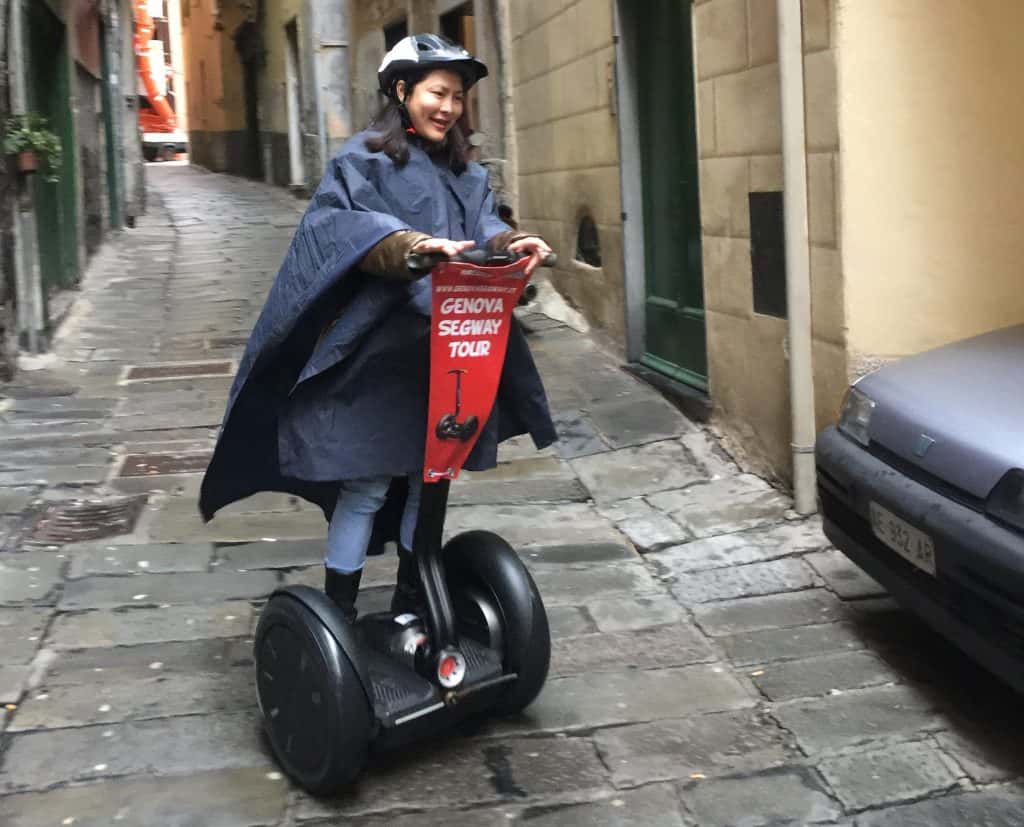The word “segue” (pronounced “seg-wey”) is a verb that describes a smooth and uninterrupted transition from one thing to another (Merriam Webster Dictionary). I literally segued (“seg-weyed”) into 2018 with a Segway.
Someone suggested that we sign-up for a “Segway Tour” in Genova, Italy on the last day of 2017. Since we had limited time in Genova, I hesitated and thought that a guided car tour would be the more efficient way to see the sites. I was proven wrong by the Segway—a two-wheeled, electric personal vehicle driven by standing on a platform and navigating with mounted handles.
The Segway allowed us to go to several sites quickly as it had the speed of a bicycle or a moderately speeding motorcycle. Unlike a car, it gave us access to narrow streets and crowded areas that were restricted to pedestrians only. We explored the interior building of Palazzo Ducale (Palace of the Doges) while riding our Segways. The Segway was also capable of climbing and descending steep and inclined streets or hills.

With its stability, navigability and zero-emissions, I became an instant fan of the Segway. It made me think that the Segway would be an ideal, alternative mode of transportation for Metro Manila or even the whole Philippines. It can reduce traffic congestion because it doesn’t take up as much road space as cars or other types of vehicles. Unlike most motorcycles or tricycles, it has no emissions because it runs on electricity. It is smaller than a bicycle or pedicab, so the lack of bike lanes or parking spaces is not an issue. It can also be driven through a pedestrian lane without causing safety hazards to other pedestrians.
The Segway was invented in 1999 by Dean Kamen. It was unveiled for the first time as the “Segway Personal Transporter (PT)” in Good Morning America in 2001, and first sold publicly through Amazon in 2002. The Beijing 2008 Summer Olympics deployed more than 100 Segway PTs as an environmental mode of transportation for its delegates.

Being athletic, fit, or young is not a pre-requisite to drive a Segway. The Segway moves and navigates by sensing the lean of the rider through micro-machined angular rate sensors and accelerometers. Unlike bicycles or skateboards which require balancing skills, the Segway’s Leanster technology balances the rider by applying forces to the ground in the direction of the lean. We had older people join our Segway Tour in Genova, including a man and a woman in their late 50s who had no problems operating the Segway as first-timers.
When we talk about mobility and traffic solutions in the Philippines, we often limit our scope of discussion to cars, motorized vehicles or mass transportation systems. The Segway or similar types of small/portable vehicles should be within the radar of our options. Segway is not the only brand or type of zero-emission, portable vehicle available. As early as 2013, I test drove in Japan a Personal Transporter (similar to the Segway) created by Toyota. In 2016, I was introduced to Peugeot’s foldable electric scooter (a two-wheel scooter that is operated by standing on a skateboard-sized platform and pedal-kicking to start/charge its electric engine).
With climate change and environmental concerns becoming more pressing concerns, I hope that the rest of the Philippines can join me in “segue”-ing (or transitioning) into 2018 and succeeding years with clean modes of transportation.

